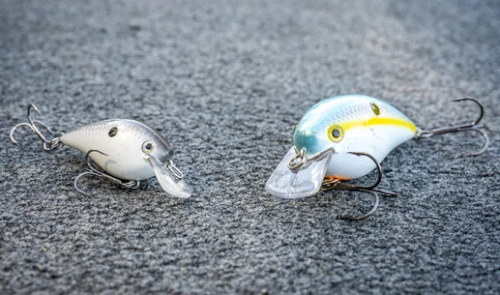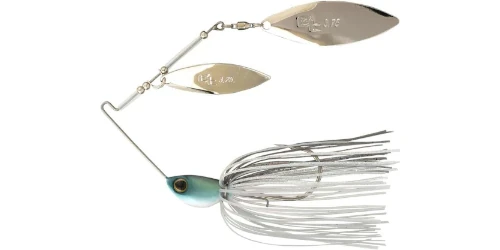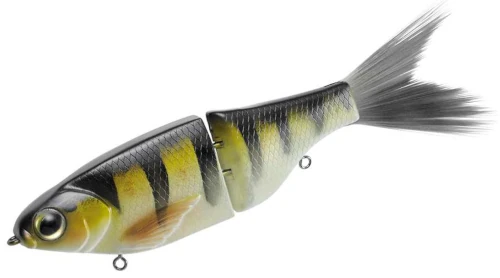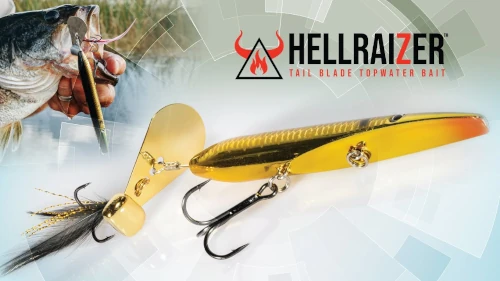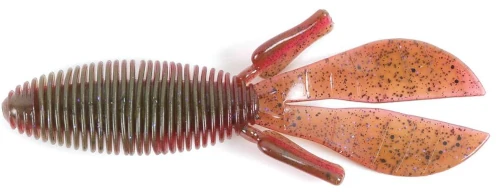Seasons Changing Fall Bass Fishing
Posted by TackleDirect on Oct 12th 2023

Continue catching trophy bass as the leaves and temperatures change with these fall fishing tips from our experts for where to cast, what baits to use and more.
Where to Fish for Bass in the Fall
If you're new to freshwater bass fishing, you might think the end of summer means the end of the season. But even with the temperatures cooling off and the days getting shorter, the fall can still be a great time to snag largemouth, smallmouth, stripers, and other prized bass. Use our fall bass fishing tips to bring home a great haul from your favorite lake or river.
As autumn rolls around, the biggest key to finding bass is this: follow the baitfish. Your target needs a food source, and they tend to migrate as their prey does. Baitfish like to swim in oxygen-rich areas, which is why they hang out in deep water during the summer. In the early fall, though, the oxygen levels in shallower waters increase, and the shorter days mean less direct sunlight. As such, baitfish head to the flats, especially those upstream. The bass will follow them, and so should you.
When late fall arrives, baitfish typically head back to deeper water. This is because the water temperatures have reversed, and the surface becomes colder, driving baitfish to areas that are less likely to freeze. Again, you should start searching in those areas as well because so will the bass. Keep in mind, though, that exactly when the temperatures shift depends on where you live. Some areas see falling water temperatures in late summer while others don't until early winter, so keep an eye on this.
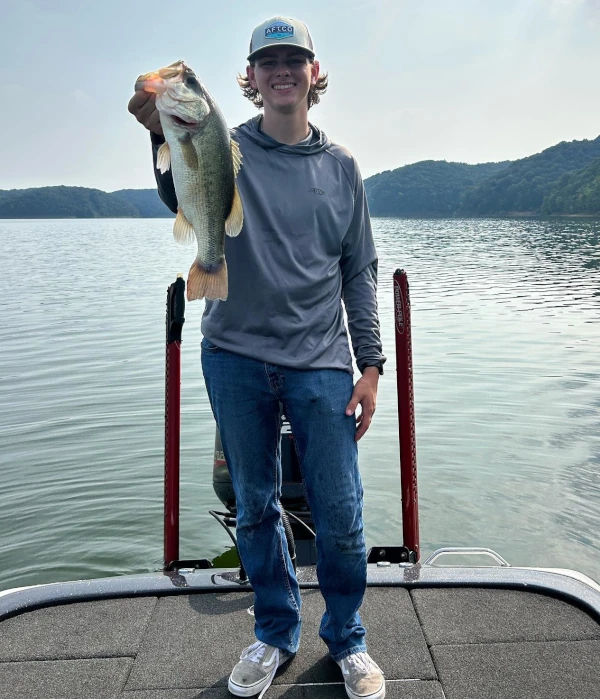
Largemouth bass image
provided by TackleDirect Pro Staff
@carterdoren
What Fall Bass Lures and Tactics Should I Use?
This mainly depends on your location. Bass in shallow areas tend to feed at the water’s surface. It’s a great opportunity to break out topwaters, swimbaits and jigs, with shad lures being a popular choice. For deep-water fishing in late fall, jerkbaits and crankbaits are generally successful, though you’ll still want swimbaits for the bigger bass. Heading to the mid-depths? Use crankbaits to cover large swaths of water — and keep them in motion.
Regardless, you’re going to want a neat and clean presentation. Water tends to be clear in the fall, so fish will be able to see messy tackle. Also, when the temperatures drop, slow your lures and retrieve. The bass are slowing down as water temperatures fall, and they often can’t keep up with active baits (buzzbaits, spinnerbaits, etc.) and quick retrieves.
Crankbaits & Jerkbaits
As the water cools, bass become more active, making them more willing to chase down prey. Crankbaits and jerkbaits imitate injured baitfish, making them a perfect choice for fall bass fishing. Vary your retrieval speed and depth until you find what works best.
Spinnerbaits
Spinnerbaits with willow or Colorado blades can be deadly in the fall. Retrieve them through areas with submerged vegetation, and the vibrations and flash will trigger bass strikes.
Hard Swimbaits
Hard swimbaits are a popular choice for fall bass fishing because they are very effective at attracting and catching big fish. Bass are especially active in the fall as they prepare for the winter months, and they are more likely to feed on larger prey. Glidebaits are designed to glide through the water with a slow, seductive action. They are typically long and slender, with a wide tail that creates a lot of movement.
Topwater Lures
Early mornings and late evenings can provide explosive topwater action. Use buzzbaits, poppers, and walking baits to entice bass near the surface. The key is to mimic the struggling baitfish that bass are targeting.
Soft Plastics
When the water temperature drops significantly, slower presentations become more effective. Soft plastic worms and creature baits rigged on a Texas or Carolina rig are excellent choices. Bounce them along the bottom near cover and structure to entice sluggish bass.
Bass can be picky eaters, especially as winter approaches. To cater to their changing preferences, it's crucial to have a variety of lures at your disposal. Different lures mimic various types of prey, and having multiple options allows you to experiment until you find what the bass are actively targeting. Be willing to swap out lures regularly until you feel that telltale tug on your line.
Other Things to Consider for Fall Bass Fishing
Fall bass fishing requires attention to detail and adaptability as the season ushers in changes in bass behavior and environmental conditions. Here are some crucial factors to consider as you refine your autumn angling approach:
- Target Transitional Periods:
The transition from summer to fall is a critical time for bass activity. To increase your chances of success, focus your fishing efforts during the transitional periods of dawn and dusk. During these times, the water temperatures tend to be more stable, and bass are more likely to be actively feeding. As they adjust to the changing conditions, they become more aggressive, making it an opportune time to catch them. - Pay Attention to Weather:
Don't underestimate the impact of weather on bass behavior. Monitoring the weather forecast is essential for any successful angler. Overcast days or light rain can work in your favor, as these conditions reduce the amount of sunlight penetrating the water. Bass become less wary in low light, making them more inclined to strike at your lures. Be prepared to adjust your strategy based on the day's weather conditions. - Focus on Remaining Vegetation:
As the temperatures cool in the fall, vegetation in the water begins to thin out. This change in the underwater landscape offers valuable clues for locating bass. Concentrate your efforts around remaining vegetation, such as lily pads and water willows. These areas serve as both a source of food and cover for largemouth bass. As the vegetation dwindles, bass tend to congregate around what's left, making it a prime spot to target. - Monitor Overnight Temperatures:
While daytime weather conditions are important, it's the overnight temperatures that have a significant impact on water temperatures. Cold nights can cause water temperatures to drop, affecting bass behavior and movement. Be aware of these overnight temperature fluctuations, as they can dictate your fishing approach. Colder nights may require you to fish deeper or slower, while warmer nights may encourage bass to venture into shallower waters.
Embrace Autumn Bass
Don't pack away your fishing gear just yet when summer ends. Fall bass fishing offers a unique and exciting opportunity to catch these elusive freshwater predators. Attention to detail and adaptability are your best allies. By following the baitfish, choosing the right lures, and adapting your tactics to the changing conditions, you can enjoy excellent bass fishing well into the autumn months. So, gear up, head out to your favorite fishing spot, and make the most of the fall bass fishing season!
Main Banner Image:
Smallmouth bass close-up
provided by TackleDirect Pro Staff
@nicholas.dellaporta
Want a chance at getting your fishing image featured?
Just Tag Your Next Catch With #HookedOnTD.
Head on over to the TackleDirect Social page for more details.

